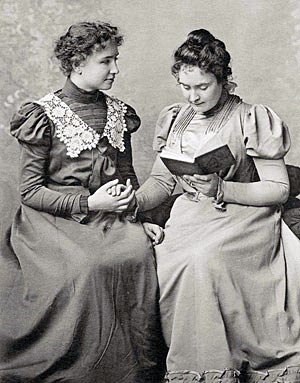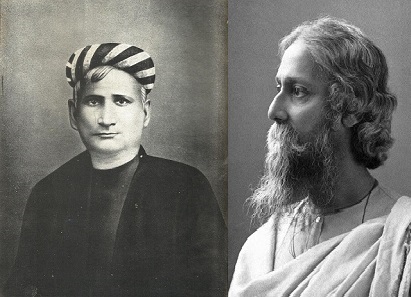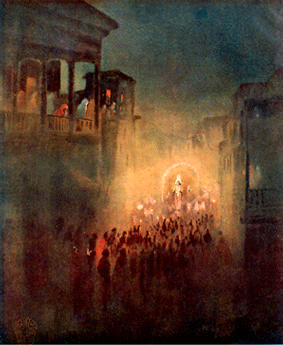|
Sangeet Kalpataru
''Sangeet Kalpataru'' (literal meaning: "Wish fulfilling tree of music".) is a Bengali language song anthology edited and compiled by Swami Vivekananda (as Narendranath Datta) and Vaishnav Charan Basak. The book was first published in August or September 1887 from Arya Pustakalaya, Calcutta. In 2000, the book was reprinted by the Ramakrishna Mission Institute of Culture. It was edited with a critical introduction by Dr. Sarbananda Choudhury. Content The book was a compilation of Bengali songs. It also discussed different aspects of vocal and instrumental music. The book was divided into different sections and songs were arranged by theme. The first sections included patriotic songs. The book included twelve Rabindra Sangeets. It contained 90-page long introduction which discussed the theory of music and 18-page long biographical notes and sketches on Bengali songwriters and poets such as Chandidas, Vidyapati, Ramprasad Sen, Ramprasad. The book was compiled by Narendranath before ... [...More Info...] [...Related Items...] OR: [Wikipedia] [Google] [Baidu] |
Ramakrishna Mission Institute Of Culture
The Ramakrishna Mission Institute of Culture (RMIC) in Kolkata, India, is a branch of the Ramakrishna Mission founded on 29 January 1938 as an outcome of the commemoration of Sri Ramakrishna's Birth Centenary Celebrations, the institute has grown over the years, and is now situated on its present magnificent premises at Gol Park in Kolkata. The institute is well known for its Philanthropy, philanthropic, educational and cultural activities all over the world. Based on the philosophy of the unity of human life, the institute endeavours to make people aware of the richness of different cultures all over the world and also of the need for intercultural appreciation and understanding. About the institute The Ramakrishna Mission Institute of Culture, a branch of the Ramakrishna Mission (founded by Swami Vivekananda), started functioning in 1938. The institute has grown over the years, and the fact that it is now housed at its present magnificent building (completed in 1960) in sout ... [...More Info...] [...Related Items...] OR: [Wikipedia] [Google] [Baidu] |
Multani (raga)
Multani is a Hindustani classical music, Hindustani classical raga. The newer raga Madhuvanti was inspired by Multani. Multani belongs to Todi Thaat. It is generally sung in the third prahar of the day, that is, around 1 PM to 4 PM. Re, Ga, Dha and Ma . Re and Dha should be weak, and should be included only in Avarohi phrases. Vadi (music), Vadi: Pa Samvadi: Sa Arohana Avarohana Pakad In Avaroh that is in descending order, the Sangati of Ma (svara), Madhyama and Gandhara is shown often. This is the characteristics of Rag Multani. In Aroh, Raga start from Mandra Nishad, just like N S g or N S M g. As there is Komal Rushabh in this Rag, it is Sandhi prakash rag. References External links More details about raga MultaniSRA on Raga MultaniRajan Parrikar on Multani Hindustani ragas {{India-music-stub ... [...More Info...] [...Related Items...] OR: [Wikipedia] [Google] [Baidu] |
1887 Books
Events January * January 11 – Louis Pasteur's anti-rabies treatment is defended in the Académie Nationale de Médecine, by Dr. Joseph Grancher. * January 20 ** The United States Senate allows the United States Navy to lease Pearl Harbor as a naval base. ** British emigrant ship '' Kapunda'' sinks after a collision off the coast of Brazil, killing 303 with only 16 survivors. * January 21 ** The Amateur Athletic Union (AAU) is formed in the United States. ** Brisbane receives a one-day rainfall of (a record for any Australian capital city). * January 24 – Battle of Dogali: Abyssinian troops defeat the Italians. * January 28 ** In a snowstorm at Fort Keogh, Montana, the largest snowflakes on record are reported. They are wide and thick. ** Construction work begins on the foundations of the Eiffel Tower in Paris, France. February * February 2 – The first Groundhog Day is observed in Punxsutawney, Pennsylvania. * February 4 – The Interstate Commerce ... [...More Info...] [...Related Items...] OR: [Wikipedia] [Google] [Baidu] |
Bireswar
''Bireswar'' (2013) is an experimental drama produced by Belgharia Shankhamala theatre group. The eventful life of Swami Vivekananda Swami Vivekananda () (12 January 1863 – 4 July 1902), born Narendranath Datta, was an Indian Hindus, Hindu monk, philosopher, author, religious teacher, and the chief disciple of the Indian mystic Ramakrishna. Vivekananda was a major figu ... has been depicted in this drama. Synopsis The drama attempts to cover the whole life of Swami Vivekananda. Credits * Writer: Basab Dasgupta * Direction and stage composition: Debesh Chattopadhyay * Audio direction: Sumantra Sengupta * Music: Srikanto Acharya and Sreejit Bhattacharya See also * '' Biley'' References Bengali theatre Swami Vivekananda Bengali-language plays {{2010s-play-stub ... [...More Info...] [...Related Items...] OR: [Wikipedia] [Google] [Baidu] |
Tagore Family
The Tagore family ( ) has been one of the leading families of Kolkata, West Bengal, India, and is regarded as one of the key influencers during the Bengali Renaissance. The family has produced several people who have contributed substantially in the fields of business, social and religious reformation, literature, art, politics and music.Deb, Chitra, pp 64–65. The most prominent figures of this family include Dwarkanath Tagore, a pioneering industrialist; Rabindranath Tagore, Nobel laureate in literature; Abanindranath Tagore, a distinguished artist and more. Family history They were Bengali Hindu Pirali Brahmin ('Pirali' historically carried a stigmatized and pejorative connotation) and originally belonged to a village named Pithabhog in what is now Khulna, Bangladesh. They were the descendants of Deen Kushari who was granted a village named Kush in Bardhaman of West Bengal by Maharaja Kshitisura. Deen became its chief and came to be known as Kushari. The Tagores came to ... [...More Info...] [...Related Items...] OR: [Wikipedia] [Google] [Baidu] |
Bengali Poet
Bengali poetry is a rich tradition of poetry in the Bengali language and has many different forms. Originating in Bengal, the history of Bengali poetry underwent three successive stages of development: poetry of the early age (like '' Charyapad''), the Medieval period and the age of modern poetry. All ages have seen different forms of poetry and poetical tradition. It reached the pinnacle during the Bengali Renaissance period although it has a rich tradition and has grown independent of the movement. Major Bengali Poets throughout the ages are Chandidas, Krittivas Ojha, Maladhar Basu, Bijay Gupta, Mukundaram Chakrabarti, Kashiram Das, Alaol, Syed Sultan, Ramprasad Sen, Michael Madhusudan Dutt, Nabinchandra Sen, Rabindranath Tagore, Dwijendralal Ray, Satyendranath Dutta, Kazi Nazrul Islam, Jibanananda Das, Jasimuddin, Sukanta Battacharya, Al Mahmud, Joy Goswami. Introduction Poetry in the colloquial dialect of Bengal first originated from Prakrit, and based upon lo ... [...More Info...] [...Related Items...] OR: [Wikipedia] [Google] [Baidu] |
Baul
The Baul () are a group of mystic minstrels of mixed elements of Sufism and Vaishnavism from different parts of Bangladesh and the neighboring Indian states of West Bengal, Tripura and Assam's Barak Valley and Meghalaya. Bauls constitute both a religious syncretism, syncretic religious sect of troubadours and a musical tradition. Bauls are a very heterogeneous group, with many sects, but their membership mainly consists of Vaishnavism, Vaishnava Hindus and Sufism, Sufi Muslims. They can often be identified by their distinctive clothes and musical instruments. Lalon, Lalon Shah is regarded as the most celebrated Baul saint in history. Although Bauls constitute only a small fraction of the Bengali population, their influence on the culture of Bengal is considerable. In 2005, the "Baul tradition of Bangladesh" was included in the list of Masterpieces of the Oral and Intangible Heritage of Humanity by UNESCO. [...More Info...] [...Related Items...] OR: [Wikipedia] [Google] [Baidu] |
Kirtan
Sikh ''kirta''n with Indian harmoniums and '' Kenya.html" ;"title="tabla'' drums (a common and popular pairing), in Kenya">tabla'' drums (a common and popular pairing), in Kenya (1960s) ''Kirtana'' (; ), also rendered as ''Kiirtan'', ''Kirtan'' or ''Keertan'', is a Sanskrit word that means "narrating, Bhajan, reciting, telling, describing" of an idea or story, specifically in Indian religions. It also refers to a genre of religious performance arts, connoting a musical form of narration, shared recitation, or devotional singing, particularly of spiritual or religious ideas, native to the Indian subcontinent. A person performing kirtan is known as a ''kirtankara'' (or ''kirtankar,'' कीर्तनकार). With roots in the Vedic ''anukirtana'' tradition, a kirtan is a call-and-response or antiphonal style song or chant, set to music, wherein multiple singers recite the names of a deity, describe a legend, express loving devotion to a deity, or discuss spiritual idea ... [...More Info...] [...Related Items...] OR: [Wikipedia] [Google] [Baidu] |
Bahar (raga)
Bahar is a Hindustani classical raga. This raga is very similar (but still distinct) to raga Malhar. This raga is from the Kafi Thaat. Theory Writing about the musical theory of Indian classical music is fraught with complications due to its complex and intricate nature. First of all, there have been no set, formal methods of written notation. Indian music is an aural tradition, and therefore writing is not an essential part of attaining talim (systematic study). But in recent years, a couple of methods of notation (swar leepi) for Hindustani Classical Music have evolved. A prominent example of them are BhatKhande Swar leepi (widely used in the present time) by Pt. VishnuNarayan BhatKhande, Creator: Hzt Amir Khusrau Arohana & Avarohana Arohana: Avarohana: Vadi & Samvaadi Vadi: Ma Samvadi: Sa Jati Shadav - Sampurna Thaat The Raag belongs to Kafi Thaat Pakad or Chalan The bare scale of this raga has little unique musical meaning, and is, therefore, require ... [...More Info...] [...Related Items...] OR: [Wikipedia] [Google] [Baidu] |
Gaganendranath Tagore
Gaganendranath Tagore (17 September 1867 – 14 February 1938) was an Indian painter and cartoonist of the Bengal school. Along with his brother Abanindranath Tagore, he was counted as one of the earliest modern artists in India. Life and career Gaganendranath Tagore was born at Jorasanko into a family whose creativity defined Bengal's cultural life. Gaganendranath was the eldest son of Gunendranath Tagore, grandson of Girindranath Tagore and a great-grandson of Prince Dwarkanath Tagore. His brother Abanindranath was a pioneer and leading exponent of the Bengal School of Art. He was a nephew of the poet Rabindranath Tagore and the paternal great-grandfather of actress Sharmila Tagore. Gaganendranath received no formal education but trained under the watercolourist Harinarayan Bandopadhyay. In 1907, along with his brother Abanindranath, he founded the Indian Society of Oriental Art which later published the influential journal ''Rupam''. Between 1906 and 1910, the artist s ... [...More Info...] [...Related Items...] OR: [Wikipedia] [Google] [Baidu] |
Bijoy Krishna Goswami
Bijoy Krishna Goswami (; 2 August 1841 – 4 June 1899), also known by the honorific ''Gosaiji'', was a Hindu social reformer and religious figure in India during the British period. Brahmo Samaj was started at Calcutta on 20 August 1828 by Raja Ram Mohan Roy and Debendranath Tagore as a reformation of the prevailing tradition of the times (specifically Kulin practices). From the ''Brahmo Samaj'' springs Brahmoism, one of the legally recognised religions in India and Bangladesh, reflecting its foundation on reformed spiritual Hinduism with elements of Judeo-Islamic faith and practice. Gosaiji's disillusionment from Brahmo Samaj led him to study the ''Chaitanya Charitamrita'', a biography detailing the life and teachings of Sri Chaitanya Mahaprabhu (1486–1534), a Vaisnava saint and founder of the Gaudiya Vaishnava Sampradaya. Bijoy Krishna Goswami belonged to the "Advaita ''parivar''" (family), as the 10th-generation descendant of Advaita Acharya, personal teacher and ass ... [...More Info...] [...Related Items...] OR: [Wikipedia] [Google] [Baidu] |
Bengali Language
Bengali, also known by its endonym and exonym, endonym Bangla (, , ), is an Indo-Aryan languages, Indo-Aryan language belonging to the Indo-Iranian languages, Indo-Iranian branch of the Indo-European languages, Indo-European language family. It is native to the Bengal region (Bangladesh, India's West Bengal and Tripura) of South Asia. With over 242 million native speakers and another 43 million as second language speakers as of 2025, Bengali is the List of languages by number of native speakers, sixth most spoken native language and the List of languages by total number of speakers, seventh most spoken language by the total number of speakers in the world. Bengali is the Official language, official, National language, national, and most widely spoken language of Bangladesh, with 98% of Bangladeshis using Bengali as their first language. It is the second-most widely spoken scheduled languages of India, language in India. It is the official language of the Indian states of West ... [...More Info...] [...Related Items...] OR: [Wikipedia] [Google] [Baidu] |







